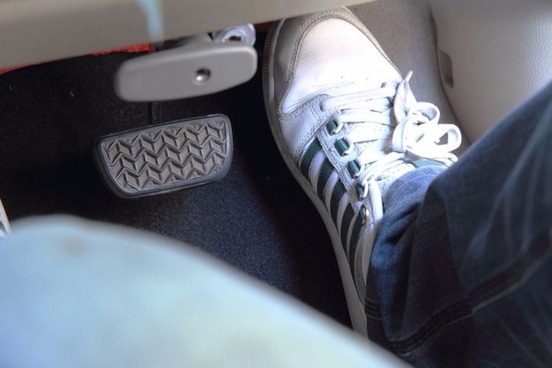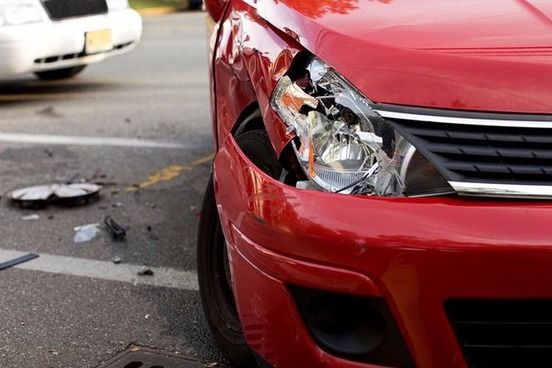
Vroom
Definition: to operate a motor vehicle at high speed or so as to create a great deal of engine noise
We now so associate the word vroom with the revving of an engine that for most people it immediately brings to mind images of cars. However, the word has not always been used in an automotive fashion. Back in the 1930s and 1940s it was not uncommon to find vroom (especially when used in triplicate) as a means of describing such disparate other sounds as exploding bombs, airplanes, and, oddly enough, the double bass.
Far back on the road there was the vroom, vroom, vroom! of exploding bombs.
— Liberty (Rye, NY), 10 Feb. 1940”Vroom! Vroom! Vroom!” The big bass viol vibrated in the darkened school auditorium.
— The Arizona Daily Star (Tucson, AZ), 4 Jan. 1935….to the trample of iron-shod heels the brow stage shook and the great plane’s vroom-vroom-vroom cut cleanly through the morning freshness.
— Detroit Free Press, 18 Aug. 1935
Since the 1960s the word, which is of imitative origin, has been primarily used to refer to cars that go fast.

Put the pedal to the metal
Definition: to drive very fast
The phrase put the pedal to the metal entered our lexicon as a colorful way of describing driving very fast, and subsequently took on the additional sense of “to work very quickly.” The term appears to have originated in the 1970s, at least as far as print is concerned. Our earliest record of use comes from the lyrics of a country music song, performed by Cledus Maggard, in which a truck driver’s travails with law enforcement are recounted.
Ten-four, back door. Put the pedal to the metal and let it roar.
— J. Huguely, The White Knight (performed by Cledus Maggard and The Citizen’s Band), 1975

Spare tire
Definition: an extra tire for a car
The spare tire has a decidedly figurative secondary meaning: “a roll of fat around the waist.” We have been subject to the phenomena of extra adipose tissue around the midriff for much longer than we have used this term to describe it; our earliest evidence for spare tire (the stomach one, not the car one) does not occur until the 1920s.
Get rid of that “Spare Tire” around your waist if you wish to acquire the new Princess silhouette. The correct high waist girdle, corselettes, etc., fitted at Eager & Simpson’s
— The Atlanta Constitution (Atlanta, GA), 3 Nov. 1929

Bumper-to-bumper
Definition: marked by long closed lines of cars
Although bumper-to-bumper is now relegated to distinct use about automobiles, the word originated in reference to a different type of car. The earliest uses of bumper-to-bumper were as a measurement of train cars, and then as a way of describing the entirety of an automobile.
Of these diagonals there are to be seventy, each with a capacity of 45 cars, on the basis of 37 feet space for each car, measuring from bumper to bumper.
— The Sun (Baltimore, MD), 8 Jan. 1890They know the Ford from bumper to bumper, being the original mechanics for Ford work when this car was first represented in Nashville….
— Nashville Tennessean (Nashville, TN), 24 Jun. 1917
The 1920s saw the first use of bumper-to-bumper to describe traffic, although it appears to have been used for streetcars first, and personal cars shortly thereafter.
The United is operating as many cars during peak hours as the downtown streets will hold. They are running bumper to bumper, and it would be impossible to have more cars on the streets than are on them now, and have the cars move at all.
— The Sun (Baltimore, MD_), 25 Feb. 1923America is cruising. It is bumper to bumper, sometimes, for a mile, with no interfering from the sidelines.
— Charles Merz, Harper’s Monthly, 1 Jun. 1925

Throw under the bus
Definition: to scapegoat
The history of crime is as old as the history of language, so chances are very good that we've been throwing people under the bus (in literal fashion) for as long as we've had buses. The figurative expression, indicating that a person has been unfairly blamed for something, is of fairly recent vintage. And while this turn of phrase appears quite frequently now in North American political circles, it seems to have begun being used in Britain, in the late 1970s or early 1980s.
The Conservative benches listened to her in silence. She was in deep trouble and the lobbies hummed with the prospect of her departure. President Galtieri had pushed her under the bus which the gossips had said was the only means of her removal.
— Julian Critchley, The Times (London, Eng.), 21 June 1982
IN-DEPTH ETYMOLOGY: Where Does the Expression 'Throw Someone Under the Bus' Come From?

Fender bender
Definition: a minor automobile accident
Fender bender has such a pleasant and reduplicative ring to it that it was applied to a number of different things before we settled on using it for small accidents. Beginning in the 1920s the term was used to refer to “an automotive mechanic,” “a pushy driver,” and was used as the name of several sports teams and a radio program on automotive safety.
As soon as a fender bender sees a limping bone breaker headed for the main entrance he starts guessing!!
— The New Castle Herald (New Castle, PA), 28 Jul. 1922Mr. Fender-Bender is a well-known traffic pest who needs something besides space to park safely.
— The Burlington Free Press (Burlington, VT), 13 Jun. 1936Tune in to “Fender Benders,” the hilarious school for safe driving sponsored by The Minneapolis Star and WCCO.
— The Minneapolis Star (Minneapolis, MN), 23 Oct. 1937When Bert Nahm’s car skidded into the ditch Saturday morning while he was on his way to work at the Erie Proving grounds, Bert figured he wasn’t in for anymore than a little fender-bender.
— The News-Messenger (Fremont, OH), 16 Dec. 1941

Hit-and-run
Definition: being or involving a motor-vehicle driver who does not stop after being involved in an accident
Hit and run are two extremely polysemous words, with so many possible senses between the two of them that it is surprising that their combination has not resulted in more meanings. Beginning in the 19th century hit-and-run was often found describing a sort of sacrifice play in baseball.
The champions’ manager says he has some brand new tricks evolved at the winter fireside, which will surprise and perplex the other clubs as much as the hit-and-run game and other forms of team work in former seasons.
— The Baltimore Sun, 21 Mar. 1896
During the First World War it was used in the sense “involving or intended for quick specific action or results.”
The Germans in their hit and run raids, during which they committed additional illegality and the inhumanity of bombarding open towns have the advantage of choosing the time of attack, and when as many as 30 destroyers can attack a patrol, you may gain some idea of the number of vessels we need on guard constantly to stop every raid.
— The Great Falls Tribune (Great Falls, MT), 17 Apr. 1917
By the 1920s the word had extended to the automotive world, as a means of describing the drivers who fled the scene of an accident.
To the Editor of The Post—Sir: Is it because street traffic is a cross-word puzzle that the police are so engrossed that they can’t catch hit-and-run drivers? What is a word of five letters signifying traffic chaos?
— The Washington Post, 8 Dec. 1924

Hot-wire
Definition: to start (something, such as an automobile) by short-circuiting the ignition system
She was arrested in the vehicle on the same day near Frederick by State police, who reported that she had “hot-wired” the car, a procedure by means of which an automobile may be started without using an ignition key.
— The Baltimore Sun, 12 Jul. 1947
We have been referring to the practice of starting a car without the benefit of having a key as hot-wiring since the late 1940s. Beginning in the 1960s we also have fallen into the habit of using this term in a rather loose fashion, as a means of describing things that have been turbocharged, run in an illicit fashion, or put to purposes other than originally intended.





